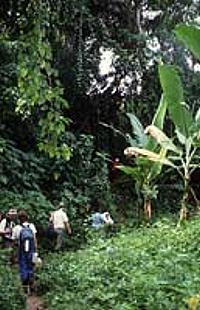Call for papers: Ebola and the law

Call for papers
Ebola and the Law
Biolaw section of the Association of American Law Schools (AALS)
Washington, D.C.
Monday, January 5, 2015, 10:30 a.m. to 12:15 p.m.

The 2014 west African outbreak of the Ebola virus is the most severe epidemic attributed to this pathogen since 1976, when international health officials began keeping records on Ebola. As of August 2014, the total number of suspected cases has approached 2,000, and the number of suspected deaths has exceeded 1,000. The World Health Organization has designated the health crisis as one of international concern. The law has a strong stake in containing this outbreak and preventing future episodes of this kind.
The Biolaw section of the AALS invites papers addressing issues of law and policy arising from the Ebola outbreak. Such issues may include (but by no means are limited to) the following:
- Why was the international legal and public health community so slow to recognize the 2014 Ebola outbreak? Human beings are supremely attuned to threats posed by other humans (such as war or terrorism), but far less prepared for threats deemed "natural" or "environmental." How should law accommodate and/or offset this biological predisposition?
- There is no vaccine or cure for Ebola. Medicines for treating Ebola, carrying some hope of reducing the mortality rate, are in extremely short supply. What are the bioethical implications raised by the decision to devote the extremely limited supplies of Ebola medication — no more than a handful of doses as of August 2014 — to medical workers of non-African origin? How should the U.S. Food and Drug Administration and its foreign counterparts handle petitions to expedite the experimental use of Ebola medication?
- The failure to contain Ebola to a few, geographically concentrated cases has enabled the virus to infect four countries (Guinea, Sierra Leone, Liberia, and Nigeria) as of August 2014. Relatively severe public heath measures, ranging from the quarantine to the cordon sanitaire, are contemplated and may be implemented in varying degrees in one or more affected countries. What are the legal and ethical implications of resort to law enforcement or even military solutions during public health emergencies?
- Outbreaks of Ebola and other highly communicable diseases are all but inevitable in an age of globalization, anthropogenic climate change, and biodiversity loss. Even apart from the bushmeat trade, which is suspected of enabling epizootics to make the jump to humans, increased human traffic into previously untouched areas has introduced viruses and other pathogens to human populations around the world. What if any solutions can the law provide, through its focus on environmental protection, immigration, trade, and human rights?
Please submit your proposals to Biolaw section chairman Jim Chen at chenjame@law.msu.edu by September 26, 2014. The section will explore channels for publishing papers presented in this program. The program will take place at the 2015 midyear meeting of the AALS in Washington, D.C., at 10:30 a.m. to 12:15 p.m. on Monday, January 5, 2015.
Eligibility: Full-time faculty members of AALS member law schools are eligible to submit papers. Foreign, visiting (without a full-time position at an AALS member law school) and adjunct faculty members; graduate students; fellows and non-law school faculty are not eligible to submit. Faculty at fee-paid non-member schools are ineligible.





 Conventional wisdom treats biodiversity and biotechnology as rivalrous values. The global south is home to most of earth's vanishing species, while the global north holds the capital and technology needed to develop this natural wealth. The south argues that intellectual property laws enable the industrialized north to commit biopiracy. By contrast, the United States has characterized calls for profit-sharing as a threat to the global life sciences industry. Both sides magnify the dispute, on the apparent consensus that commercial exploitation of genetic resources holds the key to biodiversity conservation.
Conventional wisdom treats biodiversity and biotechnology as rivalrous values. The global south is home to most of earth's vanishing species, while the global north holds the capital and technology needed to develop this natural wealth. The south argues that intellectual property laws enable the industrialized north to commit biopiracy. By contrast, the United States has characterized calls for profit-sharing as a threat to the global life sciences industry. Both sides magnify the dispute, on the apparent consensus that commercial exploitation of genetic resources holds the key to biodiversity conservation.














